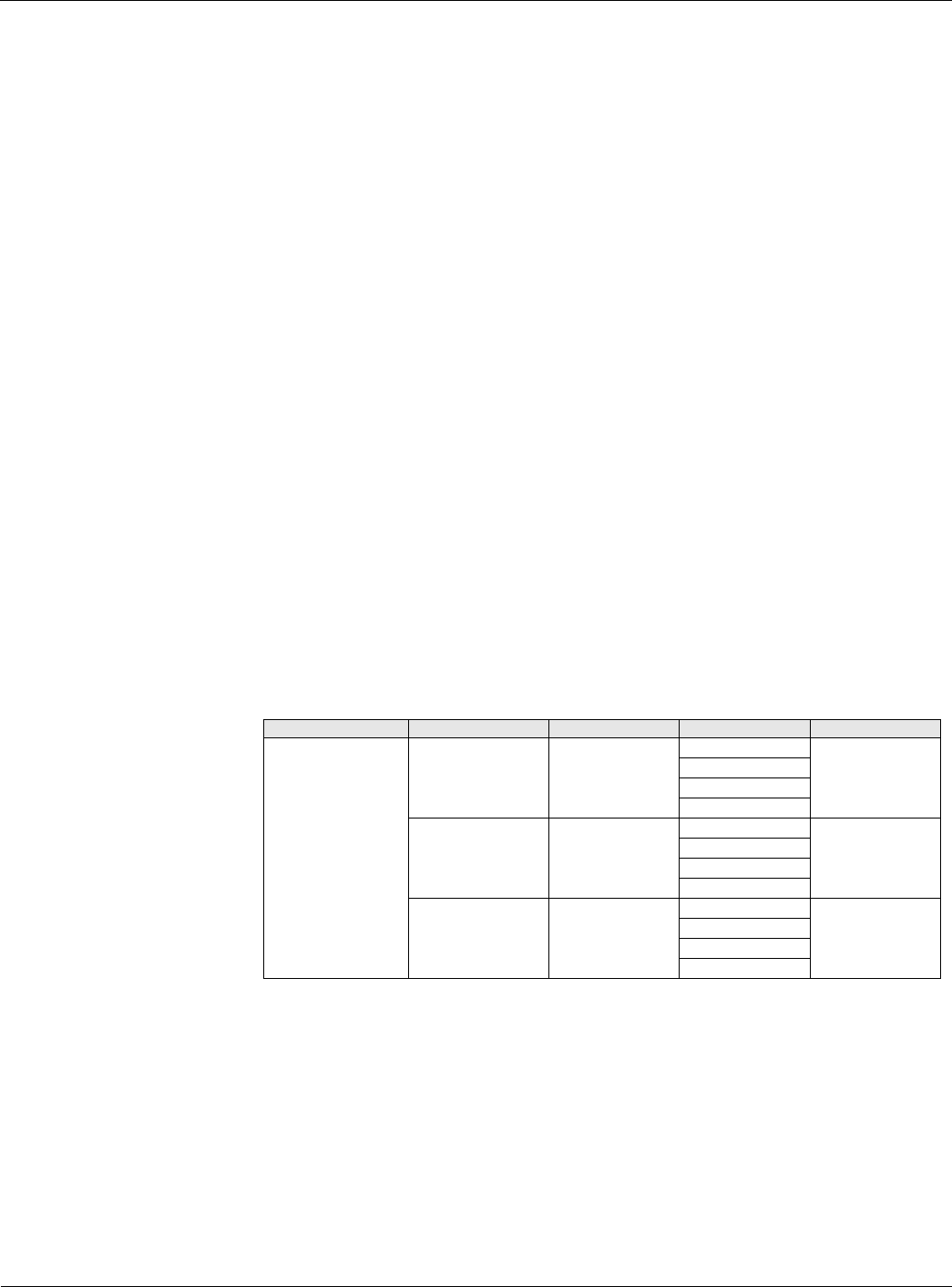Instruction manual
Table Of Contents
- Introduction
- Using the Keypad/Display
- Keypad/Display Menu Structure
- System Summary Menu
- Standard Menus
- System Menu
- Occupancy Menu
- Temperature Menu
- Flow Summary Menu
- Supply Fan Speed Menu
- Return/Exhaust Fan Speed Menu
- Cooling Menu
- Head Pressure Menu
- Evap Condensing Menu
- Economizer Menu
- Min OA Damper Menu
- Heating Menu
- Energy Recovery
- Dehumidification Menu
- Daily Schedule Menu
- One Event Schedule Menu
- Holiday Schedule Menu
- Optimal Start Menu
- Operating Hours Menu
- Extended Menus
- Unit Setup Menu
- Timer Settings Menu
- Time/Date Menu
- Supply Fan Setup Menu
- Return/Exhaust Fan Setup Menu
- Zone Temperature Setup Menu
- Compressor Setup Menu
- Head Pressure Setup Menu
- Chilled Water Setup Menu
- Economizer Setup Menu
- Design Flow Setup Menu
- Heating Setup Menu
- Dehumidification Setup Menu
- Alarm Out Configuration Setup Menu
- Alarm Limits Setup Menu
- Manual Control Menu
- LON/BACnetIP/BACnetMSTP Setup Menu
- Active Alarm Menu
- Alarm Log Menu
- Advanced Menus
- Unit Configuration Setup Menu
- Save/Restore Menu
- Alarm Delays Setup Menu
- Analog Input Status Menu
- Universal I/O Status Menu
- Digital Input Status Menu
- Digital Output Status Menu
- Adv Setup Settings Menu
- Adv Status Parameters Menu
- Alarms
- Operator’s Guide
- Determining Unit State
- Off Operating State
- Start Up Operating State
- Recirculating Operating State
- Heating
- Economizer
- Mechanical Cooling
- Determining Unit Status
- Determining Control Mode
- Determining Cooling Status
- Determining Heat Status
- Determining Economizer Status
- Determining Cooling Capacity
- Determining Heating Capacity
- Determining Supply Air Fan Capacity
- Determining RF/EF Capacity
- Determining Outside Air Damper Position
- Determining Emergency Mode
- Determining Application Mode
- Determining Occupancy Status
- Determining Occupancy Mode
- Determining Occupancy Source
- Unoccupied Operation
- Scheduling
- Temperature Control Configurations
- Heat/Cool Changeover
- Dehumidification
- Energy Recovery
- Outside Air Damper Control
- Outside Air Damper Control, Two Position
- Special Procedures for Units with WRV and More Than Two Circuits.
- Water Pump Control
- Cooling: Multistage
- Cooling: Modulating
- Heating Control
- Modulating
- Min DAT
- Indoor Air Fan - On/Off Control

42 McQuay OM 920
Keypad/Display Menu Structure
Mn Lvg Coil T is an adjustable item which is used to set the minimum leaving coil
temperature (Default = 48°F).
Mx Lvg Coil T is an adjustable item which is used to set the maximum leaving coil
temperature (Default = 55°F).
Min Reheat Spt is an adjustable item which is used to set the minimum DAT during
dehumidification.
Max Reheat Spt is an adjustable item which is used to set the maximum DAT during
dehumidification.
Reheat Period is an adjustable item which sets the “sampling time” used in the PI control
function for controlling the reheat valve.
Reheat Gain is an adjustable item which sets the “proportional band” used in the PI control
function for controlling the reheat valve.
Reheat PAT is an adjustable item which sets the “project ahead” used in the PI control
function for controlling the reheat valve.
RH Max Chg an adjustable item that sets the maximum value for an increase or decrease for
controlling the reheat valve.
RH Stg Time is an adjustable item is an adjustable item which sets a stage time period
between the minimum and maximum cooling stages during dehumidification operation.
RH Sen Type is an adjustable item used to define the field supplied humidity sensor input
signal type.
RH Min Signal is an adjustable item used to define the minimum value of the field supplied
humidity sensor current or voltage signal.
RH Max Signal is an adjustable item used to define the maximum value of the field supplied
humidity sensor current or voltage signal.
Alarm Out Configuration Setup Menu
The digital alarm output indicates the alarm group that contains the highest priority active
alarm. This output is On when no alarms are active. The options for the action of this output
when an alarm in a group occurs are On, Fast Blink, Slow Blink, or Off. These can be edited
via the keypad/display. The default values for the three groups of alarms are:
• Warnings - Off
• Problems - Slow Blink
• Faults - Fast Blink
A user could eliminate any signal of a particular group of alarms through this output by
selecting On for that alarm group in the keypad/display.
Table 37: Alarm Out Configuration Setup Menu
Menu Display Name Item Display Name Default Setting Range Password Level
Alarm Out Config Faults= Fast On 4
Off
Fast
Slow
Problems= Slow On 4
Off
Fast
Slow
Warnings= Off On 4
Off
Fast
Slow










